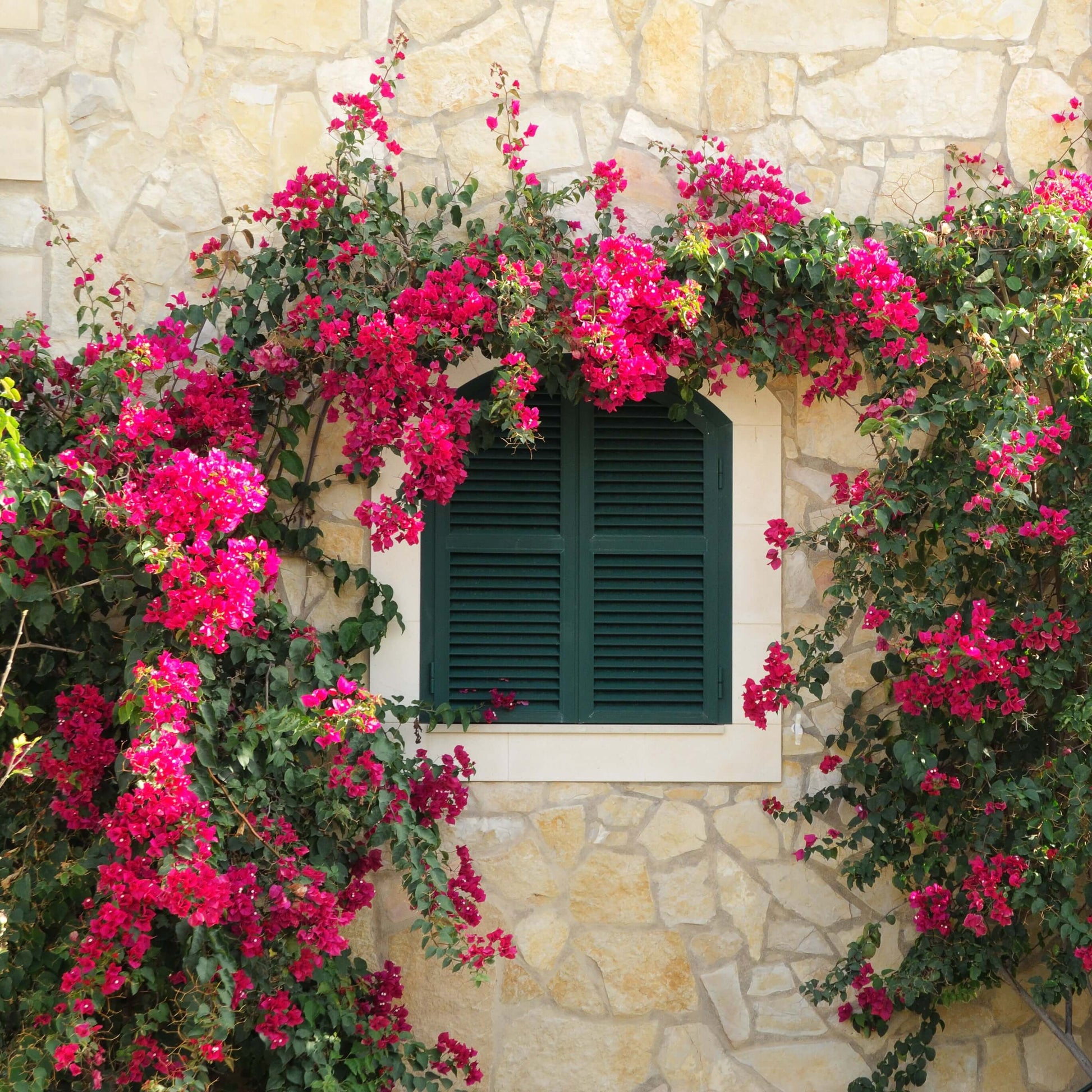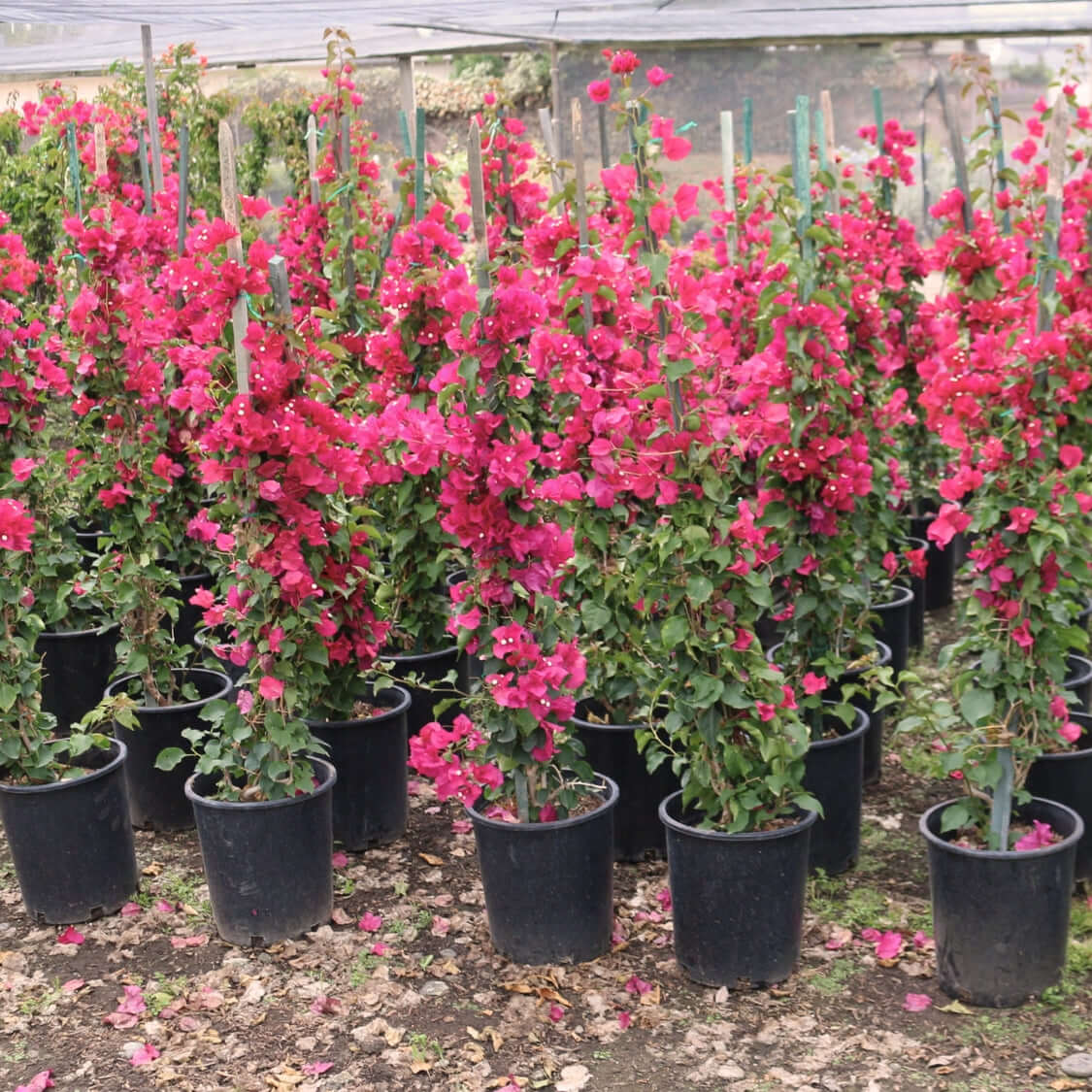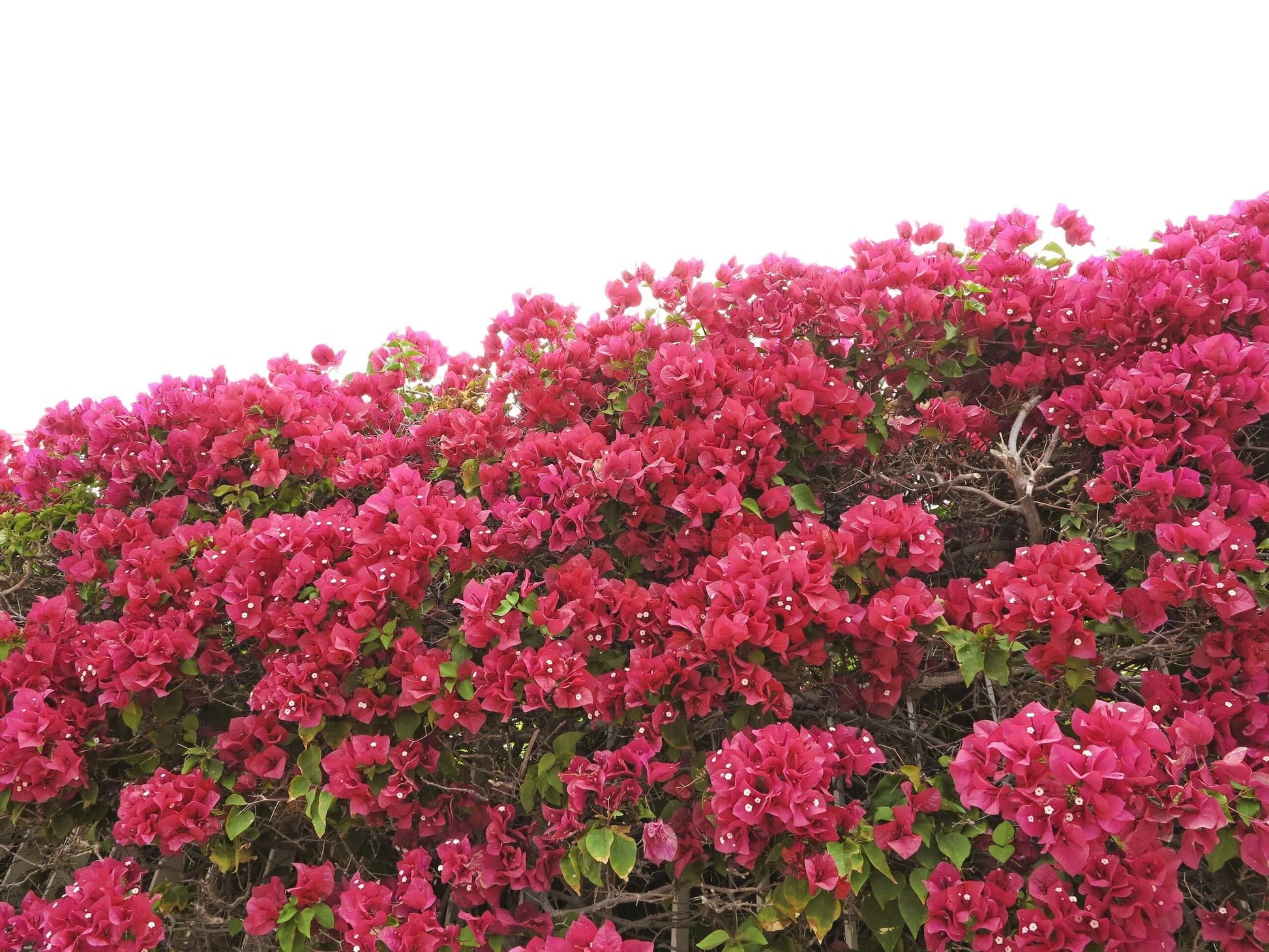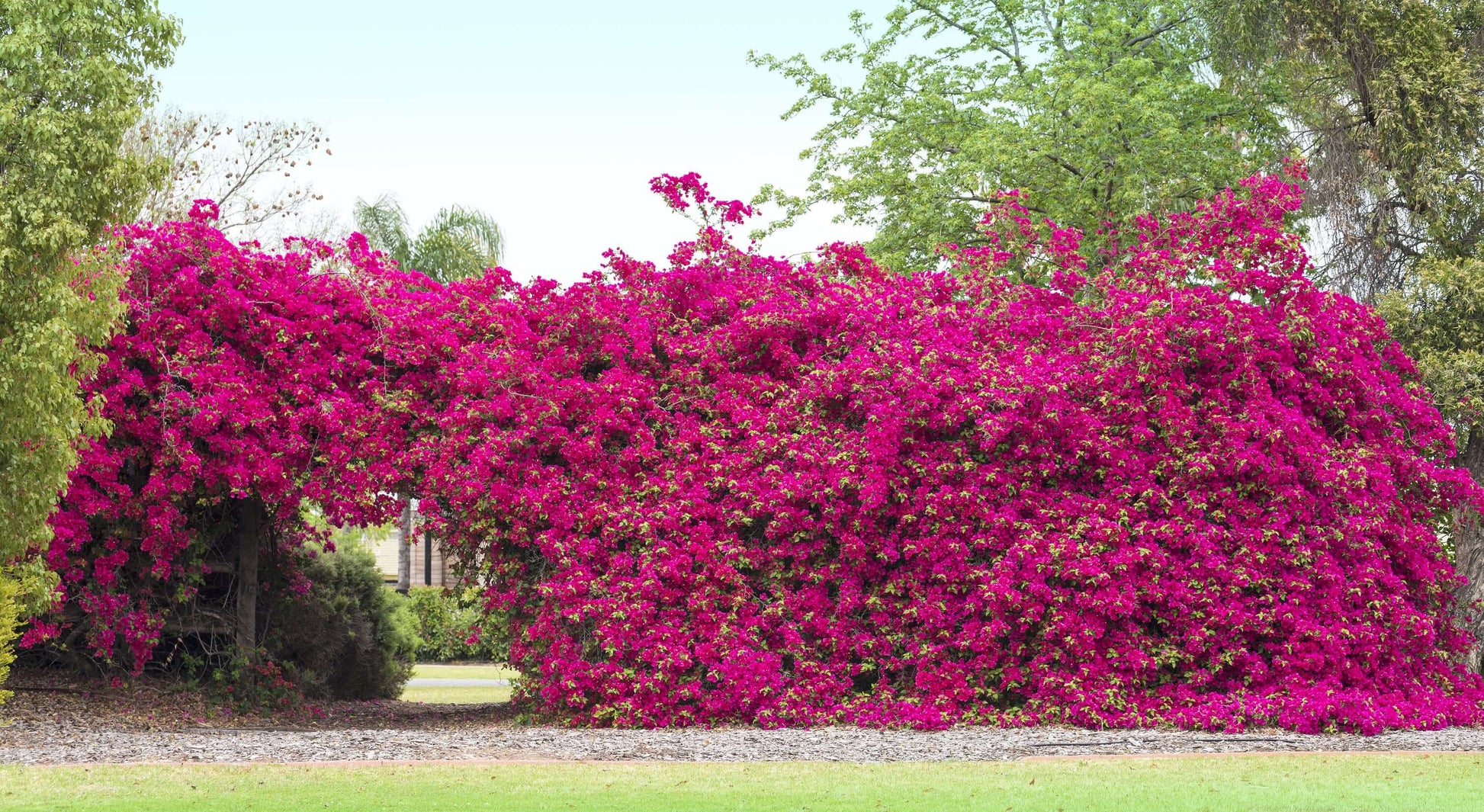
Barbara Karst Bougainvillea
Bougainvillea 'Barbara Karst' Staked
Delivery
24-hour money-back guarantee
Free delivery on orders over $349
Big Project? Call 888-444-1126 for bulk rates!
Barbara Karst Bougainvillea is a dramatic tropical plant and a popular choice for adding vibrant color to gardens and landscapes, 'Barbara Karst' staked form is a vigorous Bougainvillea hybrid, a fast-growing, woody vine that can reach a height of up to 30 feet and looks great on a trellis, arbor, wall, or fence with support.
Barbara Karst Bougainvillea produces vibrant, bright magenta-red bracts that bloom for a long period and are often mistaken as flowers, but the true flower is white and much smaller. The long-lasting bracts are the main attraction of the plant. Showy multiple flushes of magenta-red appear from late spring through fall.
Noted as one of the hardiest bougainvillea, 'Barbara Karst' is drought tolerant in coastal gardens, hardy to 20-25 degrees F, and stands up to the desert heat. Leaves may drop with cold winter night temperatures. Best in frost-free climates.
Barbara Karst Bougainvillea Staked is a beautiful, low-maintenance woody vine and a great option for those who want to add color and interest to their garden.
Bougainvilleas are generally considered semi-deciduous or evergreen, depending on the climate. In tropical and subtropical regions where temperatures remain warm year-round, they are typically evergreen and retain their leaves. However, in cooler or drier climates, bougainvilleas may lose some or all of their leaves during the winter or dry season, making them semi-deciduous. Their leaf drop is often in response to colder temperatures or drought conditions. Learn more.
How tall and wide does Barbara Karst Bougainvillea grow?
When does Barbara Karst Bougainvillea bloom?
What kind of sunlight and soil does it prefer?
How much water does it need?
15-30 ft.
Spreading
Low
Butterflies
Perfect Your Landscape With Expert Help
Customize your yard with confidence. Schedule your free consultation today and bring your outdoor space to life!



